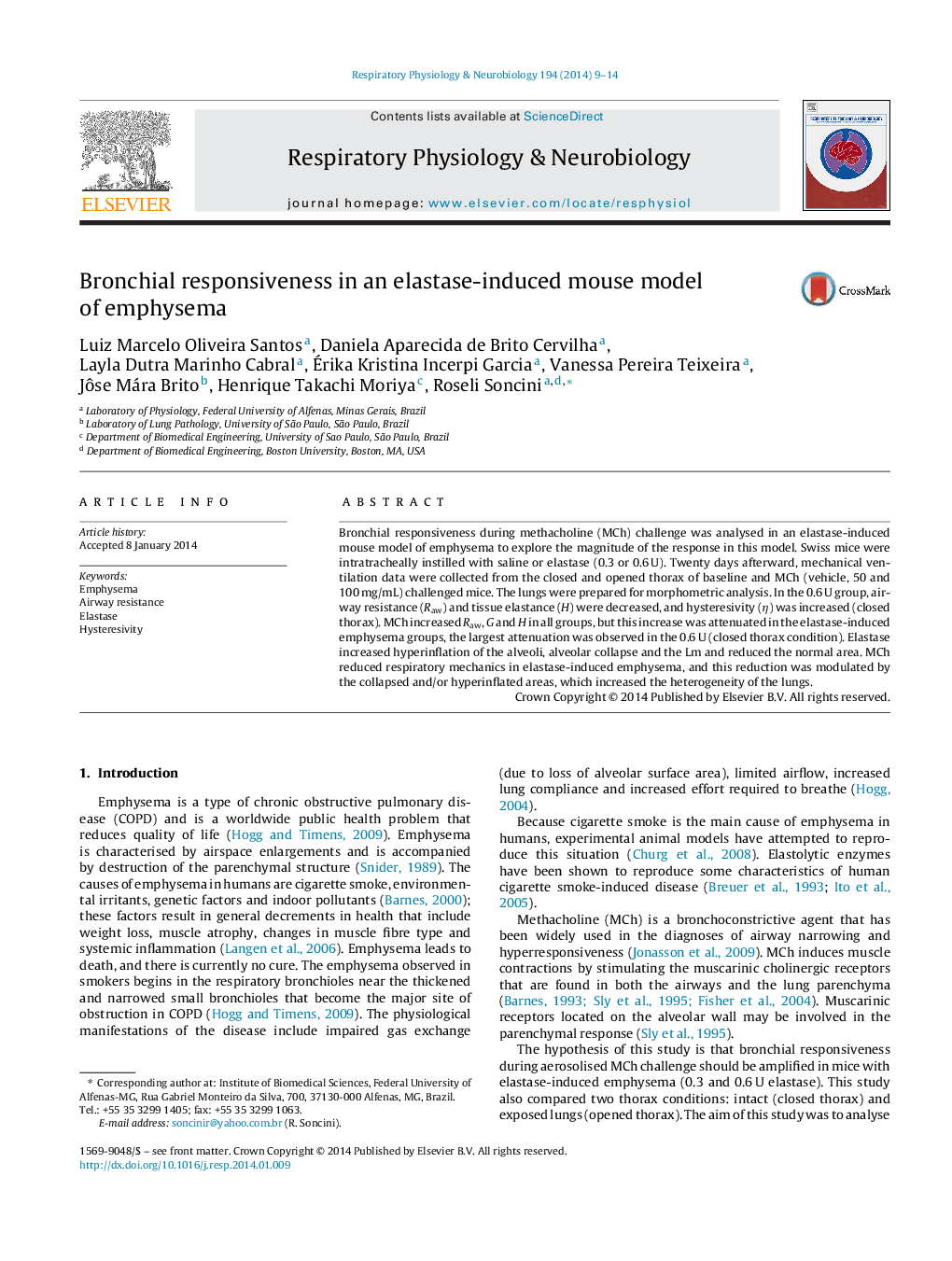| Article ID | Journal | Published Year | Pages | File Type |
|---|---|---|---|---|
| 2847083 | Respiratory Physiology & Neurobiology | 2014 | 6 Pages |
•Methacholine attenuated the airway responsiveness in elastase-induced emphysema in mice.•Collapsed and/or hyperinflated area can modulate parenchymal distortion in such a model.•Elastase levels and thorax conditions are relevant to mechanical evaluations.
Bronchial responsiveness during methacholine (MCh) challenge was analysed in an elastase-induced mouse model of emphysema to explore the magnitude of the response in this model. Swiss mice were intratracheally instilled with saline or elastase (0.3 or 0.6 U). Twenty days afterward, mechanical ventilation data were collected from the closed and opened thorax of baseline and MCh (vehicle, 50 and 100 mg/mL) challenged mice. The lungs were prepared for morphometric analysis. In the 0.6 U group, airway resistance (Raw) and tissue elastance (H) were decreased, and hysteresivity (η) was increased (closed thorax). MCh increased Raw, G and H in all groups, but this increase was attenuated in the elastase-induced emphysema groups, the largest attenuation was observed in the 0.6 U (closed thorax condition). Elastase increased hyperinflation of the alveoli, alveolar collapse and the Lm and reduced the normal area. MCh reduced respiratory mechanics in elastase-induced emphysema, and this reduction was modulated by the collapsed and/or hyperinflated areas, which increased the heterogeneity of the lungs.
